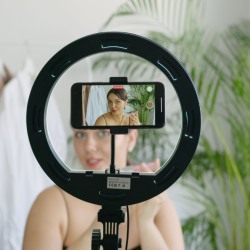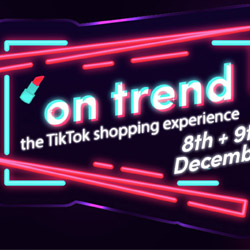At times the power of audio and of sound is somewhat neglected by brands. We’d thought we’d try and bring more attention to the power of audio marketing, and asked a few knowledgeable people what ways brands could up their game in this space.
Chris Jefford — Co-Founder and CEO at Truant London
As with other areas of marketing, the audio space offers up huge opportunities for brands to build both mental availability with consumers and deepen salience and connection. The power of sound is well documented, it makes a lot of sense to tap into this sense, as like its visual counterpart it can create shortcuts in our brains, tapping into memory and experience, increasing our heart rate, and bringing focus to the source.
But each part of the audio experience requires planning, a clear motive, and an understanding of the impact we’re trying to make. A move into podcasts may seem smart, but why, and to deliver what value? Who should be the voice, the human we hear? How is that aligned with your brand, how will the content impact listeners and what do we want them to think about us as a result? A sonic identity can create uniqueness and instant recognition, but how does that translate more fully across the user experience, if at all? An ad campaign on Spotify, what does showing up there say about you, is the brand welcomed there, how can it add value at a time where we’re interrupting someone’s music? Maximising the opportunity requires brands to have visibility on the opportunities available, clarity on the reason for them to be there, and alignment with the brand at-large. Otherwise it’s a huge opportunity missed.
Piotr Cwiklinski — Managing Director at MassiveMusic Warsaw
Audio marketing, often confined to point-of-sale playlists or star-studded campaigns, extends beyond these fragments. When used haphazardly, they may not yield the desired impact, incurring disproportionate costs. After all, these activities, though essential, are fragments of a larger puzzle. Just as a visual logo is paramount in visual branding, a sonic logo — and its brand-specific sound at large, serves as the auditory bedrock. At MassiveMusic, we always encourage brands to use their sonic identity in an ownable way, yet flexible across diverse touchpoints. This holistic approach creates a compelling auditory experience, seamlessly integrated into the broader branding and marketing canvas. Think of it as orchestrating a melody, where each note resonates across channels, leaving a lasting impression on their audience.
Alex Jungius — Director at This Is Distorted
Since the breakout success of Serial and more broadly as podcasts have become the go-to medium for deep engagement, audio has come out from the shadows and has become ‘cool’ again. Its unique qualities offer a distinct advantage in capturing audience attention and fostering genuine connections.
- Connection and loyalty
- The intimate nature of audio, particularly when consumed through headphones, creates a personal connection between the listener and the content. Brands have an opportunity to establish a more meaningful relationship with their audience by leveraging the emotional power of audio storytelling and humanising their content.
- Flexibility and accessibility
- Audio content is versatile and can be consumed in various situations – commuting, exercising, or around the house. This flexibility enhances accessibility and increases the likelihood of reaching and engaging with a diverse audience.
- Long-form content in a short-form era
- As attention spans dwindle in the era of short-form content, podcasts offer a refreshing counterbalance. The long-form format allows hosts and guests to explore topics thoroughly, providing in-depth insights and analysis that can captivate an audience seeking substance over brevity.
- Affordability and accessibility for brands
- Creating high-quality audio content is more affordable and accessible than ever. Brands can produce podcasts with relatively modest resources compared with the high production costs associated with video content.
To sum up, the resurgence of audio and the popularity of podcasts present a valuable opportunity for brands to engage with their audience on a more personal level. By mastering the art of audio storytelling, brands can create a loyal following and stand out in an increasingly competitive digital landscape.
Aleah Morrison-Basu — COO at Zelig Sound
We’re seeing an increasing number of brands starting to understand the importance of sonic branding. There seems to be more consistent usage across platforms and messaging, but it’s still not quite as well considered as its visual counterpart. We are always drawn to sonics that push a brand’s personality versus any trends. Tonal content does what nothing else can — communicate emotion — which is why at Zelig we think this is the most important consideration and is still often overlooked in sonics. Getting a sonic perfect, can then go on to influence a brand’s music and voice direction. So achieving consistency in feel and concept across a year’s worth of content is a massive win, pushing the brand’s personality and brand recognition. If you don’t have a sonic — just imagine, the Prime Video sonic has around 1 billion+ views a quarter. So that would be 1 billion lost opportunities.
Steffan Cummins — Creative Director at Wolff Olins
There are a few ways to take advantage of audio in branding, with one of the most common is the use of a sonic logo. Establishing a sonic identity to complement an animated logo is fairly standard practice; as seen with TV platforms like Netflix, Disney+, and HBO, who have successfully embedded memorable sonic identities by consistently playing this asset at the beginning of each show. Sonic logos are proven to significantly improve brand recall, leaving a lasting impression in the minds of customers. Audio can be used in more than one way, though. Increasingly, we’re exploring the concept of creating a sonic palette for brands. This would form part of a broader sensory palette, similar to a colour or material one, but designed for your ears. It can provide a consistent sonic element for a more multi-sensory brand experience on platforms.
While TV and radio are the most obvious places to apply a sonic logo or palette, it also helps enhance social content, live events, podcasts, and create an on-brand atmosphere in physical spaces. It’s an effective tool to evoke emotions, whether it’s making customers feel happy, excited, safe, or calm. Crucially, and often overlooked, the use of sound broadens the accessibility of your brand to audiences living with visual impairments, making your brand much more universal and inclusive.
Sophia Goerner — European Strategy Director at Innocean Europe
Audio marketing’s potential lies in its immediacy and capacity to evoke emotions. It’s an accessible and inclusive medium, reaching audiences during activities where visual media cannot, like driving or exercising. The non-disruptive nature of audio allows for a seamless integration into the user’s experience, enhancing brand perception without overt intrusion. Like any other discipline, the possibilities of audio marketing have exponentially transformed since the discovery of the sound logo and beyond podcast placements. It still taps into the primal power of sound — but now offers a whole new, personal connection to the customer. Brands like Milk-Bone and Estée Lauder are utilising interactive voice ads as an innovative sales channel, by allowing customers to engage and transact effortlessly through smart speakers. This not only simplifies the buying process but enriches the customer experience with a sense of immediacy and personalization. Immersive audio experiences, like Amazon Ads with Alexa CTAs, have proven to drive significant engagement, with higher add-to-cart rates and longer engagement times.
To fully unlock the power of audio marketing, let your audience enter the conversation with their own voice. Captivate their heart with creative storytelling and stimulate the wallet through interactive engagement.
Featured image: Ashutosh Sonwani / Pexels





































